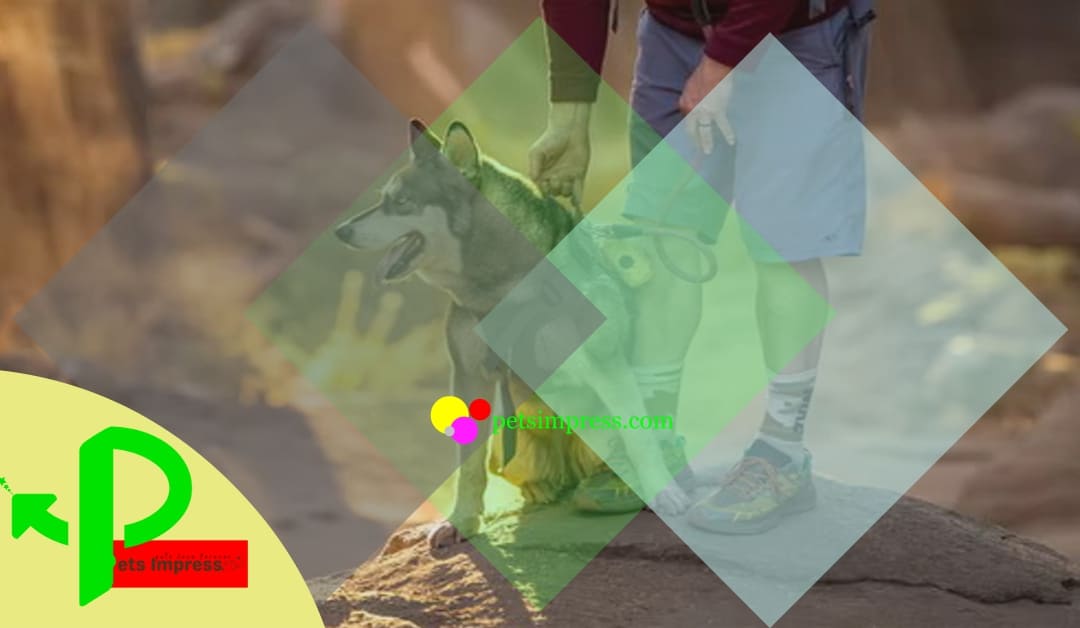Dogs
14 Ways to Prepare for a Hike With Your Dog
I do not enjoy going on mountain hikes alone, but with my dogs. Isn’t it true that a weary dog is a happy dog? If you don’t trek with your dog on a regular basis, there are a few ways to prepare for a hike with your dog.
If your dog enjoys going for walks and you want to increase his or her activity level by hiking, you can be sure he or she will like the event. Hiking in the outdoors is something great that most dog breeds appreciate almost as much as eating a delicious meal.
Ways to prepare for a hike with your dog
To find ways to prepare for a hike with your dog, the question that comes to mind is “what should I do?” We’ve got a few recommendations for you on how to prepare your four-legged best friend for hiking or trekking.
1/ Build up the endurance of your dog
Dogs as well as people that have been snoozing on the couch may need to work up an appetite for longer trips. The first thing to do is to start by building the endurance up by taking to longer walks or jogging if your walks are normally short, depending on your endurance goals. On hot days, it’s recommended to go for a stroll first thing in the morning, or later in the evening, when the air and pavement have cooled.
2/ Before you go hiking, make sure your dog is well-trained.
Hiking with your dog is one of the most enjoyable activities you can do together. You undoubtedly have a new puppy with which you want to prepare if you’ve started looking into how to train your dog for walks. If that’s the case, there are a few things you should think about before taking your dog on a walk.
First and foremost, if you have a rescue or a pound puppy, make sure you’ve socialized it to be comfortable among other people and dogs. When you’re out hiking, you’re bound to come across other dogs and people, so you want your dog to be at ease when you meet new people and their pets.
You may put your dog to the test before bringing him on his first hike by taking him to the dog park. You’ll be socializing your dog and ensuring that he’s ready to be around other people and animals by taking him to the dog park. If your dog isn’t used to being around other dogs and humans, start by taking several outings to the park until you observe your dog relaxing.
Following that, you’ll need to prepare for hiking. If you’re both out of shape, keep in mind that you’ll be the one who has to carry your dog along a trail if something goes wrong. Start taking long walks with your dog on shorter, flatter paths to get in shape for both of you.
If you’re concerned about your dog’s health, a vet visit before your first trip is an excellent idea.
If your dog is already well-behaved, you might want to consider enrolling in a hiking training class with him. You’ll learn a lot about hiking with your dog from those who have done it before. You’ll also be walking with other folks, which is safer in numbers.
When you’re first learning how to hike with your dog, it’s best to go with other people since you’ll always have someone to aid you and you’ll be able to ask questions as you progress.
3/ Research on some Dog-friendly trails
After that, try doing some research to identify the best dog-friendly trails in your area. Check to see if dogs are permitted on the path you intend to trek. Remember that not all hiking routes allow dogs, so do your research to be sure you can take your dog on a hike.
If you enjoy hiking in National Parks or State Parks, the paths and areas where you can bring your dog are limited. Check for information on where you can bring your dog when visiting a certain park.
You want to look for trails that aren’t too difficult for your dog’s paws. As a result, avoid trails with jagged rocks and instead choose trails with dirt tracks. Don’t forget about the weather as well. If it’s hot outside, look for a path with plenty of shade for your dog.
4/ Keep in mind the importance of food, water, and treats.
When you hit the trail, your dog will require lots of food, drink, and treats. While you’re hiking, you’ll definitely carry along food and water for yourself, but you’ll also need to remember to bring along what your dog needs.
It’s a good idea to bring some of your dog’s usual food along with a couple of tempting treats. You’ll also want to give your dog a few bites while you’re hiking so that he may maintain his energy levels while on the go. Depending on the length and difficulty of your trek, you may want to give your dog some treats to assist him to complete it.
When trekking with your dog, bring a separate water bottle with a foldable bowl. That way, you may refill your dog’s water bottle with whatever water he or she doesn’t consume. Here are examples below:
-
 New Portable Pet Water Bottle$30.44
New Portable Pet Water Bottle$30.44 -
 2-in-1 Outdoor Bottle For Pets$19.94
2-in-1 Outdoor Bottle For Pets$19.94
5/ Get your dog some equipment.
Consider obtaining a dog backpack for your larger dog to assist decrease your collective load. Make sure the weighted backpack isn’t more than 15 to 20% of your dog’s body weight, and adjust it so it sits at your dog’s shoulders rather than his hips. Also, before going out on the trails, have your dog wear the backpack on regular walks.
You can have your dog carry some of the stuff if it is competent in carrying a pack and is the right size, age, and fitness level. Pet Impress sells backpacks for your dog to carry their belongings in.
A first aid kit, water dish, dog waste bags, water, food, and food bowl can all be kept in your dog’s backpack.
6/ Maintain proper etiquette and a consistent recall.
Hiking frequently allows your dog to run free and off-leash, but this comes with responsibilities for both the pet owner and the dog! Even if your dog is on a leash, excellent manners are essential so that everyone may enjoy the route (including you!).
A consistent recall is one of the most critical actions you can teach your dog when they are off-leash. This is useful if there is another person or animal around, or if you simply want to keep your dog within sight. It may take some time, and you should gradually increase your exposure to more distracting surroundings, so get started immediately! Also, remember to make your dog’s training positive and enjoyable.
You should also keep in mind that while your dog may be friendly, other dogs (and people) may not be, so having control of your dog and having him sit or walk alongside you while other hikers pass by is excellent trail etiquette. Whether your dog wants to say hello, check with the other person to see if it’s acceptable for your dog to approach.
7/ Don’t forget to bring poop bags.
You’ll also need to carry some poop bags to clean up any messes your dog makes on the trail. Keep in mind that you are responsible for maintaining the path’s ecosystem. As a result, you should have lots of poop dogs with you on your trek so that you can pick them up after your dog. At petsimpress.com, we have the following:
-
 Poop Bags Dispenser$16.79
Poop Bags Dispenser$16.79 -
 4-in-1 Aid For Pet Owners$27.29
4-in-1 Aid For Pet Owners$27.29
8/ Keep critters and other risks at bay.
Many of the points already listed will help keep you and your dog safe, but make sure your dog is up to date on vaccines as well as heartworm, flea, and tick prevention. If your dog doesn’t have a rabies tag on his collar, you may wish to bring a copy of his vaccination record with you.
If your dog has very light skin or thin fur, you should also consider using dog-specific sunscreen.
Also, make sure your pets’ nails are cut. On longer excursions, her nails that are excessively long can create foot discomfort like blisters. If your dog dislikes having her nails clipped, ease her into it over time.
Finally, keep a watch out for heatstroke in your dog. Many dogs will simply keep going until they pass out, so knowing what to look for and what to do if your dog becomes hot is crucial. Make sure your dog has plenty of water stops when she needs to and shade along the trail to avoid heatstroke.
9/ Pack an extra set of puppy clothes.
If you’re going on a chilly hike or intend to camp overnight, bring some extra clothing for your dog. You won’t need to dress your dog in numerous garments when you’re on the go. Warmer gear, on the other hand, will keep your dog pleased throughout extended vacations or when camping overnight.
If you’re traveling when the weather is exceptionally chilly, it’s a good idea to pack a couple of layers of clothing with you. If the temperature lowers more than predicted, you can have your dog sleep comfortably.
10/ Don’t forget to bring a Dog’s First Aid Kit
While most hikers bring a first-aid kit to handle any injuries they may sustain while on the trail, you should consider doing the same for your dog. As a result, make sure you carry lots of doggy first-aid supplies with you. Below, you’ll need only this recommended kit:
If your dog slashes his paw or is bitten by a tick, you’ll want to be prepared. If you have your canine first-aid supplies on hand, you’ll be able to help your dog right away, ensuring that he or she remains healthy and safe.
11/ Bring your dog’s favorite toy with you.
Consider bringing your dog’s favorite toy with you on a lengthy hike or an overnight camping vacation. Longer treks usually necessitate taking breaks to eat.
-
 Tire of Fun Dog Chew Toy$23.09
Tire of Fun Dog Chew Toy$23.09 -
 Soft Ball Dog Toy$16.79
Soft Ball Dog Toy$16.79 -
 Dog Soccer Ball Toy$19.94
Dog Soccer Ball Toy$19.94
Bringing your dog’s favorite toy with you will keep him occupied if you have to stop for a while. If you have a dog who likes to run off and explore, his favorite toy will serve as a nice distraction.
12/ Where should you go?
Where can you take your dog now that you’re prepared? National parks have very severe laws, and many of them either don’t allow dogs on the trails, so they’re not a suitable option. Many state parks allow dogs as long as they are kept on a six-foot leash, which is convenient for people who don’t have the friendliest pups or are currently training them.
Most localities have information displayed or available online, so double-check leash restrictions and dog policies before heading out to avoid being disappointed.
13/ Keep a close eye on your dog.
Keep an eye on your dog while you’re hiking in case he or she displays any signs of exhaustion or discomfort. If your dog is limping, slow, or panting excessively, it’s time to take a break. Check on your dog, give him or her some food or drink, and use the first aid equipment as needed.
It’s important to remember that you don’t have to wait until your dog appears tired to take a break. Instead, take breaks to ensure that both you and your dog stay hydrated and well-fed so that you can keep going. As a result, you can avoid issues by taking efficient and effective pauses.
14/ Check Your Friend Before Heading Home
After you’ve completed your first hike, make sure you inspect your dog before returning home. It’s critical to keep an eye on your dog’s health and make sure he doesn’t have any scratches, bruises, or other problems. Examine your dog’s paws and tummy to determine if anything has been scraped or rubbed. Also, keep an eye out for ticks and bug bites so you can take care of them immediately away.
Conclusion
So far, it is clear, I hope, that before you set out to go on a trip or hiking with your pal, you take all the necessary precautions to prepare him/her mentally and physically.









Good post. I learn something totally new and challenging on blogs I stumble upon on a daily basis. Reading content from other authors and practicing something from their websites is always useful.
Pingback: Pets lover